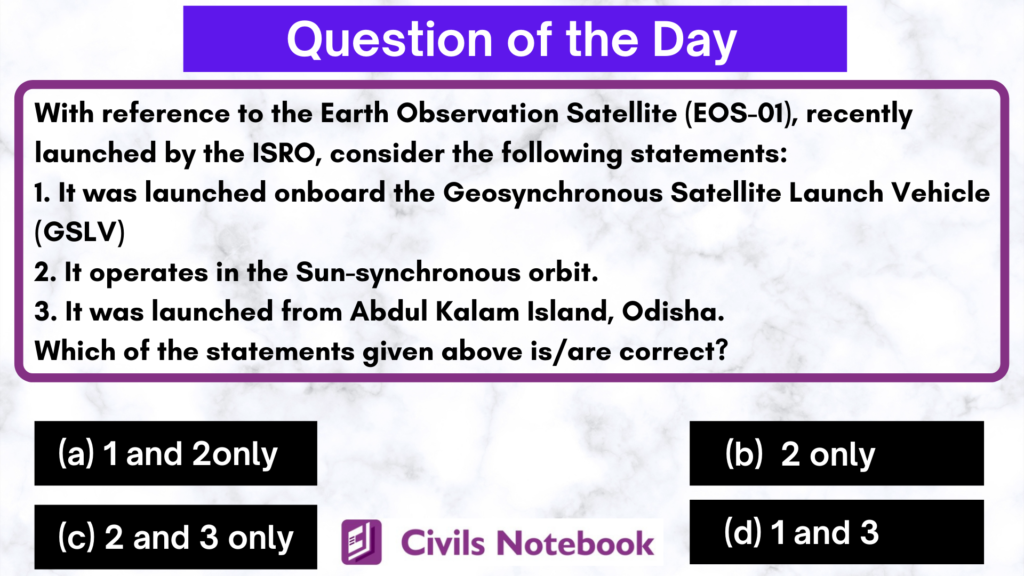
Explanation:
• India’s Polar Satellite Launch Vehicle, in its fifty-first flight (PSLV-C49), successfully launched EOS-01 along with nine international customer satellites from Satish Dhawan Space Centre (SDSC) SHAR, Sriharikota on November 07, 2020. Hence statements 1 and 3 are not correct.
• It will operate in Low-earth orbit. A low Earth orbit (LEO) is relatively close to Earth’s surface. It is normally at an altitude of less than 1000 km but could be as low as 160 km above Earth – which is low compared to other orbits, but still very far above Earth’s surface. Hence statement 2 is correct. • EOS-01 is another Radar Imaging Satellite (RISAT) an earth observation satellite that will work together with RISAT-2B and RISAT-2BR1 launched last year, intended for several applications covering agriculture, water resources, urban planning, rural development, mineral prospecting, environment, forestry, ocean resources and disaster management.
• EOS-01 (like RISAT-2B and RISAT-2BR1) uses synthetic aperture radars to produce high-resolution images of the land. One big advantage that radar imaging has over optical instruments is that it is unaffected by weather, cloud or fog, or the lack of sunlight. It can produce high-quality images in all conditions and at all times.
o Depending on the wavelength of the electromagnetic radiation used by the radar, different properties on land can be captured in the image. For example, a low wavelength signal can capture tree cover or vegetation, while a higher wavelength signal can penetrate even dense tree cover to look at the contours of land beneath.
o EOS-01, and its sister RISATs, use X-band radars that operate at low wavelengths and are considered best for monitoring of urban landscape, and imaging of agricultural or forest land.
• For the launch of EOS-01, ISRO used a new variant of its PSLV rocket that has been flown only once before, in January last year, when it had placed the Microsat-R satellite in orbit. This variant of PSLV does not become waste after depositing its satellite in the orbit. Instead, the last stage of the rocket, the one that remains after the satellite is separated, can acquire its own orbit and be used as an orbital platform for other onboard instruments to perform experiments in space. In effect, the fourth stage acts like another satellite, with a life span of about six months.
• Of the nine foreign satellites being carried in the mission, four each are from the United States and Luxembourg, while another is a technology demonstrator from Lithuani
• Varieties of instruments have been flown onboard these satellites to provide necessary data in diversified spatial, spectral and temporal resolutions to cater to different user requirements in the country and for global usage.
Hence the correct option is B.
